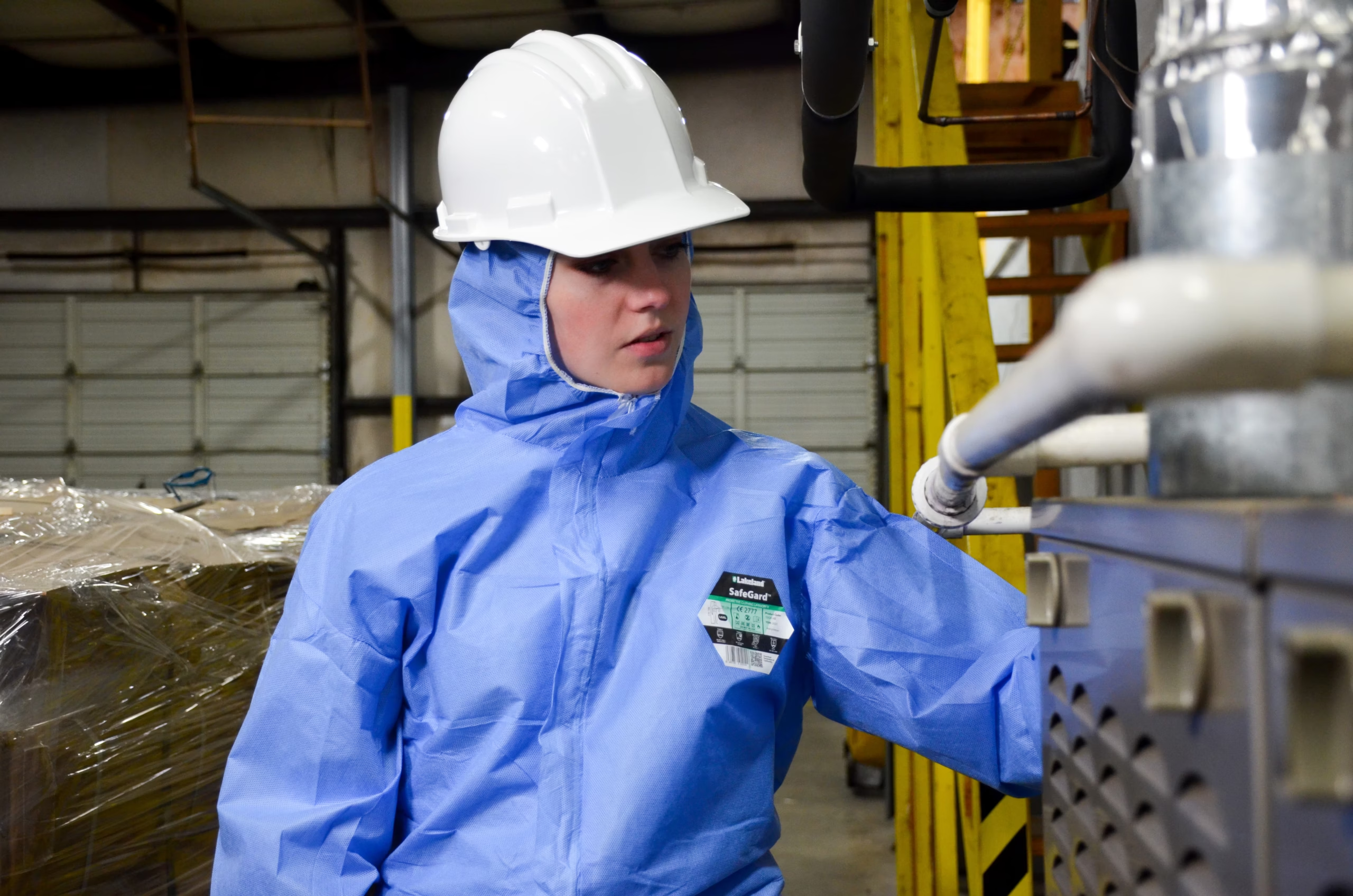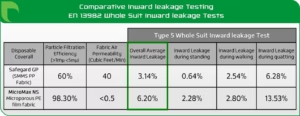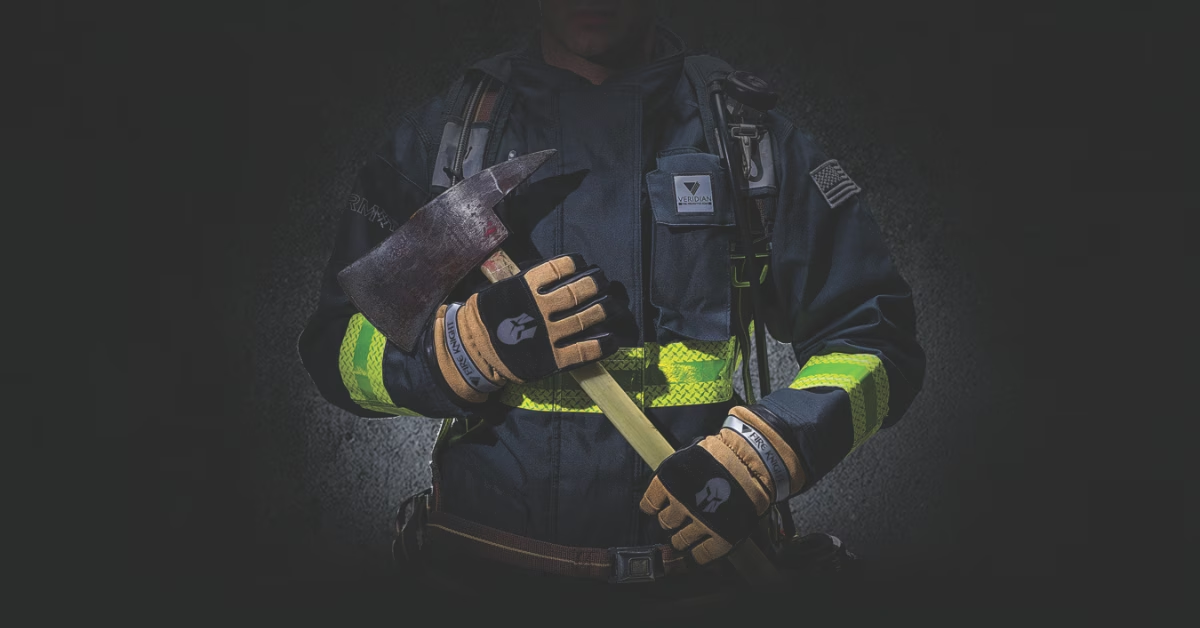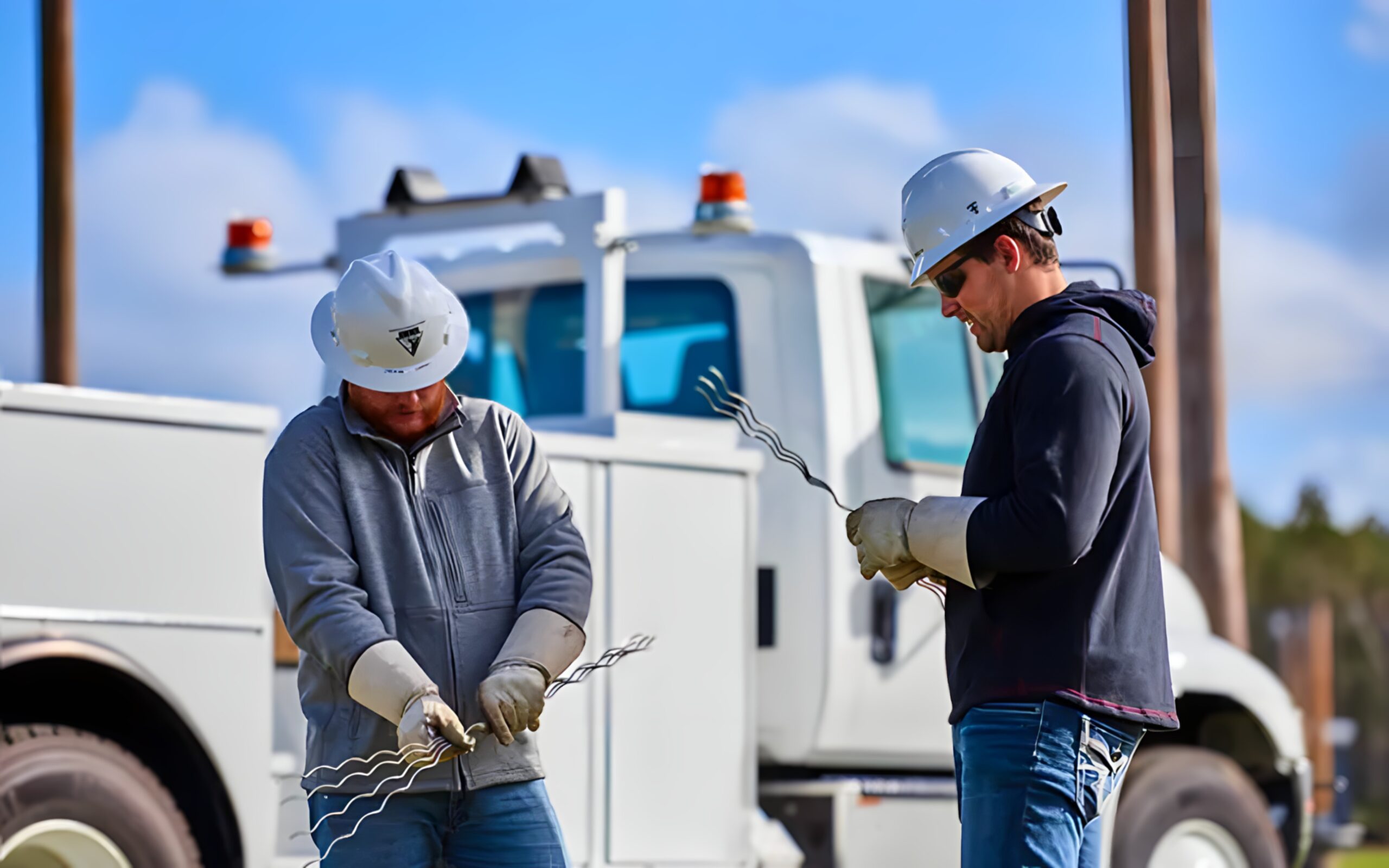Ein bekannter Autor sagte einmal: "Es ist eine wichtige und beliebte Tatsache, dass die Dinge nicht immer so sind, wie sie scheinen." Dies gilt besonders für den Bereich der PSA (Persönliche Schutzausrüstung) und des Gefahrenschutzes, vielleicht mehr als für jeden anderen Aspekt der Wirtschaft. Die globale Industrialisierung der letzten Jahrzehnte hat die Sicherheitsindustrie ins Leben gerufen. Arbeitnehmer auf der ganzen Welt arbeiten in Umgebungen, die von zahlreichen Gefahren bedroht sind. Die Internationale Arbeitsorganisation der Vereinten Nationen geht davon aus, dass jährlich fast 3 Millionen Menschen aufgrund von Arbeitsunfällen oder arbeitsbedingten Verletzungen und Krankheiten sterben. Dies ist eine große Herausforderung, und die Sicherheitsindustrie existiert, um sie zu bewältigen.
Zwar haben eine bessere Ausbildung, technologische Fortschritte und die Entwicklung von Sicherheitsprogrammen und -normen die Situation dramatisch verbessert (Statistiken zeigen deutlich, dass in Ländern mit einer besser entwickelten Sicherheitsindustrie und -normen weniger Unfälle passieren), doch fehlt es oft an einem tiefgreifenden Verständnis für echte Schutzprobleme. Wir leben in einer Welt, die zunehmend nach schnellen, leichten und einfachen Antworten sucht. Die Realität des Schutzes von Arbeitnehmern vor Gefahren wie giftigen Chemikalien ist jedoch nicht einfach; sie ist komplex. Um einen angemessenen Schutz zu gewährleisten, ist ein gründliches Verständnis dieser Komplexität unerlässlich.
Dennoch gibt es immer noch zahlreiche grundlegende Missverständnisse - oder PSA-Mythen - in Bezug auf spezifische Schutzfragen, PSA-Normen und Sicherheitsprotokolle. Im Folgenden finden Sie fünf Beispiele aus dem Bereich der Chemikalienschutzkleidung.
1. Mythos: Chemikalienschutzanzüge garantieren Null-Kontamination
Der gebräuchlichste Typ von Chemikalienschutzanzügen ist ein Overall mit Kapuze. Die Benutzer ziehen diese Art von Schutzanzügen - die häufig nach einer entsprechenden Norm zertifiziert sind - weltweit an, um sich vor gefährlichen Chemikalien zu schützen, und gehen davon aus, dass sie vor Kontamination sicher sind.
Unabhängig von der chemischen Barriere, die der Schutzanzug bietet, muss der Schutzanzug jedoch zusammen mit anderer persönlicher Schutzausrüstung wie Gesichtsmaske, Handschuhen und Stiefeln getragen werden. Trotz aller Bemühungen, die Nähte mit Klebeband abzudichten, ist ein geringes Eindringen in den Schutzanzug sehr wahrscheinlich, wenn nicht sogar unvermeidlich. Dies liegt an der Dochtwirkung (der Tendenz einer Flüssigkeit, durch kleine Löcher oder Spalten gesaugt zu werden) und der Tatsache, dass viele Chemikalien leicht verdampfen und sich eher wie ein Gas als wie eine Flüssigkeit verhalten.
Bei vielen Chemikalien ist diese geringe Kontamination möglicherweise nicht signifikant. Toxische Chemikalien können jedoch selbst bei geringer Exposition der Haut oft dramatische langfristige gesundheitliche Folgen haben. Das Fehlen eines unmittelbar sichtbaren Problems ist nicht gleichbedeutend mit dem Fehlen eines Problems. Dies könnte eine teilweise Erklärung für den anhaltenden weltweiten Anstieg der Krebsinzidenz sein.
Die Realität im Bereich des Chemikalienschutzes sieht so aus, dass die einzige einigermaßen sichere Möglichkeit, eine Null-Kontamination eines Arbeitnehmers zu erreichen, die Verwendung eines gasdichten Anzugs ist, was für viele Unternehmen schwer zu rechtfertigen sein dürfte. Ein besseres Verständnis der Grenzen der derzeitigen Methoden zur Auswahl von Chemikalienschutzanzügen wäre jedoch zweifellos von Vorteil.
2. Mythos: Die EN 1149-5-Zertifizierung gewährleistet einen vollständigen antistatischen Schutz
Eine ständige Gefahr bei vielen Anwendungen ist das Risiko einer elektrostatischen Entladung (ESD) - ein Funke -, der eine brennbare oder explosive Atmosphäre entzündet. Die meisten Arten von Schutzkleidung bestehen aus synthetischen Fasern, die sich bei Bewegung stark statisch aufladen können. In Arbeitsumgebungen, insbesondere in der petrochemischen Industrie, gibt es zahlreiche brennbare Flüssigkeiten und Dämpfe, die ein Risiko darstellen können.
EN 1149, die Norm für "antistatische" Kleidung, ist die scheinbare Lösung. Der korrekte Begriff lautet jedoch "ableitfähig". Die Norm sieht verschiedene Tests vor, mit denen bestätigt werden soll, dass der Oberflächenwiderstand des Gewebes so gering ist, dass statische Aufladungen unschädlich über die Oberfläche in den Boden abgeleitet werden können, bevor eine elektrostatische Entladung entstehen kann.
Es gibt jedoch mehrere Probleme, die vielen Nutzern nicht bewusst sind.
Erstens kann das Kleidungsstück zwar die Ableitung von Ladungen ermöglichen, aber diese Ladungen können nur dann unschädlich zur Erde gelangen, wenn es einen Weg gibt. Dieser Weg kann über den Körper des Trägers führen (da wir größtenteils aus Wasser bestehen, sind wir gute Stromleiter), über das Design des Schutzanzugs (z. B. sorgt ein Schutzanzug mit angebrachten Füßen für ständigen Bodenkontakt) oder sogar über einen leitfähigen Draht, der am Schutzanzug und einem bekannten Erdungspunkt befestigt ist. Der entscheidende Punkt ist, dass die EN 1149-Zertifizierung allein ohne einen bestätigten Weg zur Erde nicht garantiert, dass der Schutzanzug antistatisch ist und immer noch eine elektrostatische Entladung verursachen kann.
Zweitens wird bei Einweg-Schutzanzügen der Oberflächenwiderstand durch Auftragen einer Beschichtung aus einem schwachen Waschmittel, das auf der Gewebeoberfläche trocknet, verringert. Das Waschmittel ist feuchtigkeitsabsorbierend, so dass es bei der Verwendung Feuchtigkeit aus der Atmosphäre aufnimmt und einen dünnen leitfähigen Film auf der Oberfläche bildet, wodurch der Widerstand verringert (oder die Leitfähigkeit erhöht) wird. Theoretisch ist dies wirksam und ermöglicht es den Kleidungsstücken, die Anforderungen der Norm an einen reduzierten Oberflächenwiderstand zu erfüllen. Es können jedoch auch Probleme auftreten:
- Es ist auf die Absorption von Luftfeuchtigkeit angewiesen, was es bei niedriger Luftfeuchtigkeit weniger wirksam und bei sehr trockener Atmosphäre möglicherweise unwirksam macht.
- Es handelt sich um eine topische Behandlung, die abfärben kann (sie wird vor der Herstellung des Kleidungsstücks auf den Stoff aufgetragen, ein Teil kann während der Herstellung verloren gehen, noch bevor sie den Händler und den Benutzer erreicht) und sich mit der Zeit abbauen kann. Aus diesen Gründen ist es ratsam, neue Kleidungsstücke zu verwenden und eine längere Verwendung oder Wiederverwendung zu vermeiden.
Für die Benutzer bedeutet dies, dass eine einfache Zertifizierung nach der Norm EN 1149 nicht als Garantie für wirksame antistatische oder statisch ableitende Eigenschaften angesehen werden sollte. Die Minimierung des Risikos einer elektrostatischen Entladung in einer explosiven oder entflammbaren Atmosphäre hängt ebenso sehr von der Handhabung der verwendeten Kleidung ab. Ohne ein angemessenes Management kann die EN 1149-Zertifizierung bedeutungslos sein.
3. Mythos: Höhere Partikelfiltration gleich besserer Staubschutz
Es ist davon auszugehen, dass ein Schutzanzug aus einem Gewebe mit höherer Partikelfiltrationseffizienz einen besseren Schutz gegen gefährliche Stäube bietet.
Dies ist jedoch nicht unbedingt der Fall.
Eine Schlüsselfrage bei jeder Chemikalienschutzanwendung lautet: "Wie kann die Chemikalie in die Schutzkleidung gelangen?" Im Falle von Staubpartikeln liegt die Antwort im "Blasebalgeffekt".
Wenn sich der Träger eines Einweg-Overalls bewegt, verschiebt sich die Luft im Inneren. Wenn sie nicht leicht durch das Gewebe eindringen kann, wird sie durch andere Öffnungen in der Anzugskonstruktion gepresst - durch den Reißverschluss, die Nähte und insbesondere durch die Lücken zwischen dem Anzug und anderen getragenen PSA wie Masken, Handschuhe und Stiefel. Dies führt zu konstanten Luftströmen in und aus dem Schutzanzug, wobei der Schutzanzug wie ein Blasebalg wirkt - daher der Name. Alle Staubpartikel in der Luft werden durch diese Luftströme in den Schutzanzug gesaugt.
Ist der Stoff dagegen atmungsaktiver und damit luftdurchlässiger, erzeugt der Anzug einen geringeren Blasebalgeffekt, der den Luftstrom reduziert und dazu führt, dass weniger Partikel ins Innere gezogen werden.
Das ist nicht nur theoretisch. Es ist sogar die einzige Erklärung dafür, warum Staubpartikel in einem Einwegoverall landen. Der Typ-5-Staub-Innenlecktest kann dies beweisen. Bei diesem Test wird der prozentuale Anteil an Staub außerhalb des Schutzanzugs gemessen, der bei verschiedenen Bewegungen der Testperson ins Innere gelangt. Der Vergleich zwischen einem atmungsaktiven und einem nicht atmungsaktiven Schutzanzug verdeutlicht diesen Punkt.
Diese Daten belegen zwei wichtige Punkte:
Erstens ist trotz der besseren Partikelfiltration des Schutzanzugs aus mikroporösem Film die Gesamtleckage im SMMS-Schutzanzug geringer, da das atmungsaktive Gewebe zu einem geringeren Balgeffekt führt und weniger Partikel in den Schutzanzug gezogen werden, was die Existenz des Balgeffekts belegt.
Zweitens ist die nach innen gerichtete Leckage bei jeder einzelnen Bewegung mit dem mikroporösen Folienoverall viel höher, weil er einen viel größeren Balgeffekt erzeugt - insbesondere bei der anstrengendsten Bewegung, dem Hocken.
Entscheidend ist, dass die Anwender nicht davon ausgehen sollten, dass ein Schutzanzug mit besserer Partikelbeständigkeit automatisch auch besseren Schutz bietet. Wenn der Schutzanzug eine geringe oder schlechte Luftdurchlässigkeit aufweist, ist es wahrscheinlich, dass er einen größeren Blasebalgeffekt erzeugt, der dazu führt, dass mehr Partikel ins Innere des Schutzanzugs gezogen werden.
4. Mythos: PSA-Normen sind immer eindeutig und garantieren einen angemessenen Schutz
Ach, wenn das doch immer so wäre!
PSA-Normen - ob NFPA-, ASTM- oder europäische EN-Normen - sind zweifelsohne eine bedeutende positive Kraft in den laufenden Bemühungen um die Sicherheit der Menschen. Sie stellen sicher, dass die PSA die Mindestanforderungen erfüllt, und ermöglichen den Benutzern einen Leistungsvergleich, um die für die jeweilige Aufgabe am besten geeignete PSA auszuwählen. Die Tatsache, dass sie oft so geschrieben sind, dass sie schwer zu lesen und zu verstehen sind, schmälert jedoch ihre potenzielle positive Wirkung. Hier ein Beispiel:
EN 943 ist die Norm für gasdichte Anzüge. In diesem Abschnitt wird die Anzahl der für die praktische Leistungsprüfung erforderlichen Proben erläutert:
"Es werden vier Tests durchgeführt. Für Anzüge mit erhöhter Robustheit sind zwei Musteranzüge zu prüfen, die jeweils von zwei Testpersonen getestet werden. Bei normalen Schutzanzügen testen zwei Testpersonen je zwei neue Musteranzüge (insgesamt vier Anzüge)."
Mit etwas Mühe kann man den Sinn entschlüsseln. Aber ist er wirklich klar, prägnant und unmissverständlich?
Vielleicht weil die Normen nicht "benutzerfreundlich" geschrieben sind, werden sie nicht von genügend Menschen gelesen. Dies könnte erklären, warum wichtige Absätze wie dieser aus der Norm EN 14325, die Methoden und Klassifizierungen für Schutzkleidung enthält und sich auf die Prüfung der Permeationsbeständigkeit von Chemikalienschutzanzügen bezieht, oft übersehen werden:
"Es kann gefährlich sein, Überlegungen zur sicheren Tragezeit einer bestimmten Chemikalienschutzkleidung nur auf den Wert der normierten 1-Durchbruchzeit für eine bestimmte getestete Chemikaliezu stützen."
Leider ist dies vielen Planern von Chemikalienschutzanzügen entgangen, denn genau das, wovon ausdrücklich abgeraten wird, tut ein Großteil des Marktes ohnehin!
Normen sind zweifelsohne ein positiver Beitrag zum Schutz der Menschen. Wenn sie jedoch klar und prägnant formuliert würden, so dass mehr Menschen in der Branche sie tatsächlich lesen, wären sie noch wirksamer.
5. Mythos: Jeder Vertriebshändler oder Hersteller bietet wirksame PSA-Anleitungen
PSA-Händler sind ein wichtiges Glied in der PSA-Lieferkette. Sie stellen die Produkte jedoch nicht her, und viele vertreiben Tausende von Artikeln. Daher können sie selbst bei bestem Willen nicht das für einzelne PSA-Artikel erforderliche fundierte Fachwissen erlangen.
Die Welt des Schutzes und der PSA ist komplex. In einer Kultur, in der die Menschen zunehmend unter Zeitdruck stehen und nach schnellen, einfachen Antworten suchen, müssen Sicherheitsfachleute mit echten Experten in Kontakt treten - mit Herstellern, die sich die Zeit nehmen, die komplexen Zusammenhänge zu verstehen, die Normen genau zu interpretieren und sicherzustellen, dass die Arbeitnehmer den notwendigen Schutz erhalten. Echte PSA-Experten sind von unschätzbarem Wert.
Unsere Aufgabe bei Lakeland ist es, Menschen zu schützen. Die Gewährleistung der Sicherheit von Arbeitnehmern ist unser wichtigstes Anliegen. Wir verfügen über mehr als vier Jahrzehnte Erfahrung in der Entwicklung, Herstellung und Lieferung von Chemikalienschutzkleidung. Wir sind die Experten und der Hersteller, mit dem Sie zusammenarbeiten, wenn Ihre Mitarbeiter vor gefährlichen Chemikalien geschützt werden müssen.
Kontaktieren Sie uns für eine Beratung zu Ihrem Chemikalienschutz. Wir helfen Ihnen, Ihre Mitarbeiter zu schützen. Denn das ist es, was wir tun.




